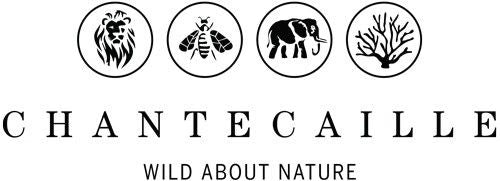
Adult Hawksbill turtle.
Turning The Tide For Sea Turtles
The Amazon Conservation Team, our Sea Turtles Collection partner, is collaborating with indigenous communities from Colombia to Mexico in a sweeping effort to protect marine turtles alongside traditional culture.
Indigenous people of South and Central America have a strong connection with marine turtles going back millennia, considering them to be "messengers," "grandmothers," and “wisdom keepers” because of their longevity. This respectful relationship is deeply embedded in their cultural traditions and ancestral knowledge, and celebrated in songs, rituals, and art.
Sea turtles such as Hawksbills, Olive Ridleys, Green and Leatherbacks are also emblematic for scientists, as key indicators of the overall health of marine and coastal ecosystems. “In places where turtles thrive, so does the entire food chain, as they feed on and regulate population levels of species like seagrass and jellyfish, provide food themselves to apex predators like sharks and jaguars, and help to maintain prey-predator balance,” says Liliana Madrigal, co-founder of the Amazon Conservation Team.

Olive Ridley hatchlings.
Marine turtles are highly migratory, traveling instinctually along ancient routes that run between the Amazon and Mesoamerica, and even across continents. Once abundant, however, marine turtle populations have been shrinking within these coastal areas for decades, threatened by indiscriminate fishing, ocean pollution and plastics, egg poaching, climate change and the related degradation of nesting sites. Given the patterns of marine turtles’ movement—as many as 2,000 miles in a season—conservation is arguably most effective when undertaken across national boundaries and ecosystems. As Liliana points out, “What’s the point of protecting a turtle in Costa Rica if it’s going to be killed on its migratory path to Mexico?” Also, ACT believes, conservation strategies work best when informed by those whose knowledge of species’ historic patterns runs deepest, and whose livelihoods are dependent on their survival.
And so one and a half years ago, ACT joined forces with leaders of indigenous local coastal communities from Colombia, Panama, Costa Rica, and Mexico to launch an ambitious, cross-border initiative called Ancestral Tides. Drawing on both traditional knowledge and western science, the indigenous sea turtle conservation communities began to exchange insights and strategies to conserve these coastal ecosystems and sea turtles while revitalizing related cultural traditions.

Left: Member of the Comcáac sea turtle project releasing an Olive Ridley hatchling into the sea.
Right: First hatchlings emerging from a rescued nest by the Comcáac sea turtle project. Images courtesy of Juan Carlos Cruz.
Western Science Meets Traditional Knowledge
Since its founding 27 years ago, ACT’s main focus has been on the greater Amazon ecosystem, where they collaborate on indigenous-led conservation efforts. (Chantecaille last partnered with ACT on our Hummingbird Collection in 2020, in support of an indigenous women’s organization in the Ecuadorian Amazon.) But “nothing in nature is fragmented,” Liliana says, and when a spiritual leader of the Kogi people in Colombia pointed out to ACT that turtles in Costa Rica were inseparable from the ones along the Colombian coast, a spark was lit and the organization decided to act. “Ancestral Tides grew out of our conversations with indigenous people who were expressing a deeply felt need,” she says. There are several turtle-conservation efforts in the coastal areas of the Americas, “but none of them integrate their spiritual and cultural traditions into a program framework.”
Today Ancestral Tides connects five indigenous groups across four countries, from the Kogi in Colombia to the Comcáac in Northern Mexico. Together, they combine proved methods of sea turtle protection such as nesting site restoration and relocation, turtle tagging and hatcheries with cutting-edge GPS transmission to find hotspots for their conservation.
For instance, on the Pacific rainforest coastline of the Osa Peninsula in Costa Rica, Hawksbill sea turtles begin nesting in May. Here, the local sea turtle conservation group, with support from ACT, spends nights patrolling the local beaches for the relocation and protection of sea turtle eggs, releasing thousands of tiny hatchlings from the hatchery 55 days later (typically, only 1 of 1,000 hatchlings survive to adulthood, so a protected release greatly increases their chances). Up north along Mexico’s Gulf of California, the giant Leatherback sea turtle, an endangered species sacred to the Comcáac community, is rarely seen anymore. However, along the rainforest beaches here, the Guna Yala tribe protects the nests of thousands of Leatherbacks, which they consider a sister species. And along the Caribbean coast of Colombia, the Kogi tribe are applying their knowledge of coastal conservation and sea turtle protection by revitalizing their coastal territory in the Sierra Nevada mountains, which holds great cultural and spiritual significance for them.
“This collaboration has been a two-way learning process,” says Juan Carlos Cruz, Ancestral Tides’ manager of science and conservation. “We are teaching indigenous communities to collect data scientifically so we can monitor their populations simultaneously from Mexico to Colombia. But we’re also learning so much from them.” One such example: scientists believed it was impossible to distinguish male and female baby turtles after hatching without complex scientific approaches such as DNA testing. But members of the Comcáac community in Mexico demonstrated how sex can be distinguished from the size and position of the tail. “Things that science has not begun to understand, they have carried for thousands of years in their culture,” Juan Carlos says.
He recalls starting a project with a sea turtle hatchery in a Comcáac village in Mexico’s Sea of Cortez, where an elder performed a traditional chant to bless the project. It was about a leatherback turtle swimming by herself in the sea at dark, but who noticed that moving her flippers through the water caused bioluminescent organisms to light up all around her, making her feel less alone. “It is essentially a song about how everything is interconnected,” Juan Carlos says. “And I was like, wow, we need to record this information to share with the world how nature conservation can also preserve these fragile cultures.” (You can listen to the song here.)

Members of both Comcáac communities and ACT researchers at the Sea Turtle Festival in the Sonoran desert in 2023. Images courtesy of Juan Carlos Cruz.
Shifting the Tide
Already, Ancestral Tides’ impact is being felt in the regions in which they operate. Nest protections have been strengthened: in Costa Rica, at the start of the project in 2018, the team found that 90% of nests were lost due to poaching (to sell or to eat the eggs) or predated by feral animals, but reduced that loss to almost zero in 2022. At Preciosa Beach in the Osa Peninsula, the number of effective Hawksbill nests increased from 13 in 2018 to 77 in 2022, and over 50,000 Olive Ridley, Green, and Hawksbill turtle hatchlings have been released each year.
ACT has also set up ecological monitoring programs using cutting-edge technology to protect all species of sea turtles nesting in Ancestral Tides sites. This includes GPS tracking, which allows researchers to identify travel routes that the females follow after nesting, and hot spots for feeding and reproductive areas, so conservation efforts can be better directed.
In fact, Chantecaille’s donation from our Sea Turtle Collection will go towards purchasing GPS tags for turtle monitoring in the region, and we will be able to check in on the turtles during their seasonal migrations. We are proud to support the Amazon Conservation Team and its Ancestral Tides initiative in their groundbreaking conservation effort.

Recent emerged hatchlings from an Olive Ridley rescued nest from the Comcáac sea turtle hatchery. Images courtesy of Juan Carlos Cruz.
Shop This Story




